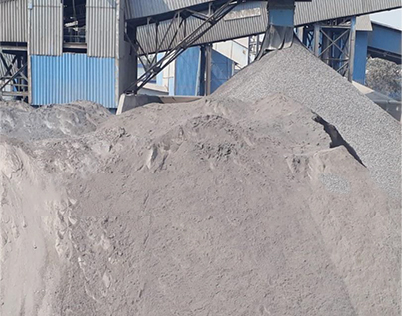Use industrial solid waste such as fly ash and steel slag to replace raw materials to help sustainable development

It is difficult to reduce carbon in the cement industry. How to achieve energy saving, decarbonization and emission reduction in the clinker calcination process is a key proposition for the cement industry to achieve low-carbon production.
What pollution does the cement industry have?
The carbon emission of the cement industry mainly comes from the production of clinker, and its main raw materials are limestone, sandstone, and aluminum-iron raw materials. The pyrolysis of these raw materials in a pyrolysis furnace produces a large amount of CO2, which accounts for the majority of carbon emissions from cement production.
What is raw material substitution?
Raw material replacement technology refers to the use of calcium carbide slag, fly ash, steel slag, calcium silicate slag, etc. to replace limestone as raw materials for cement production, thereby reducing CO2 emissions during the calcination of raw materials.
The raw material substitution method is the most effective low-carbon production method. Limestone will generate a large amount of CO2 in the decomposition furnace. The use of calcium-rich wastes to replace high carbon-loaded raw materials such as limestone can significantly reduce CO2 emissions; the fuel substitution method serves multiple purposes, not only Carbon emissions can be reduced, and waste and garbage can be co-processed.
What are the raw material substitution processes?
Calcium carbide slag replacement: Carbide slag will produce a large amount of carbide slag waste in the process of preparing acetylene. Carbide slag is mainly composed of 70% Ca(OH)2, which is easier to decompose than limestone.
Steel slag replacement: Steel slag is mainly composed of oxides of elements such as Ca, Mg, Fe, Si, and Al, and contains most of the raw materials for cement production. If the calcareous raw material in the raw meal is replaced, the CO2 emission caused by the decomposition of limestone can be effectively reduced in the production process of clinker.
Quartz sludge replacement: Quartz sludge is the waste sludge left after the quartz ore excavated by the quartz sand factory has been crushed, washed, screened, dried and refined into silicon.
Papermaking sludge replacement: The current papermaking sludge contains calcium, silicon, aluminum, iron, magnesium and other elements, and the content of Al2O3 is high, which can replace the aluminum correction raw material in cement production.
By vigorously carrying out research and large-scale application of industrial solid waste to replace cement raw materials, the consumption of natural mineral resources and energy can be significantly reduced. However, limestone, the main raw material of the cement industry, needs more efficient raw material substitution and more suitable technological cooperation due to its huge consumption and extremely limited alternative resources. Therefore, there is still a lot of room for development in the domestic raw material substitution field.
